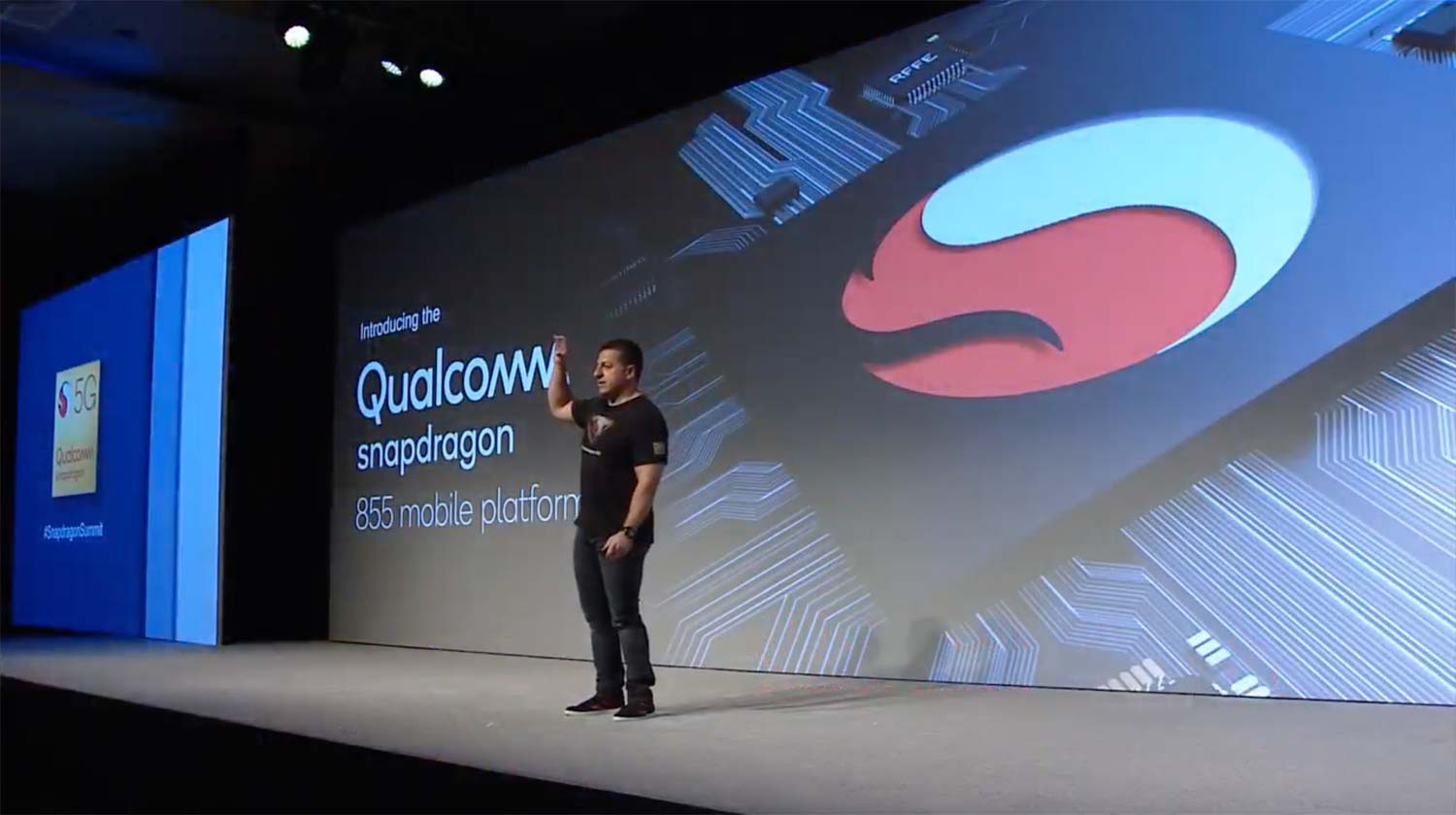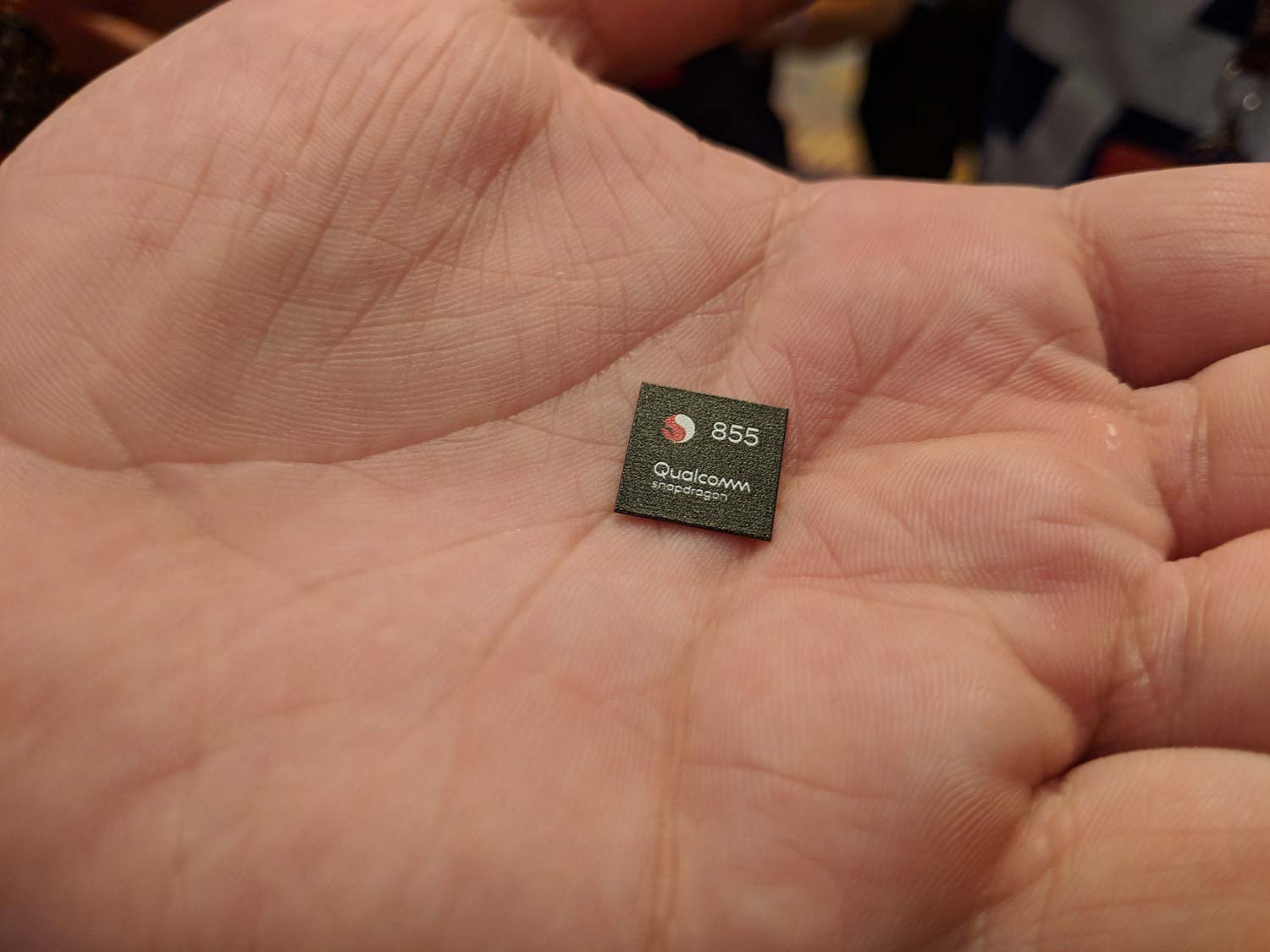Snapdragon 855 Unveiled: Meet the 5G Superchip That Should Power the Galaxy S10
Qualcomm has announced its Snapdragon 855 mobile processor, which will enable 5G networking and include support for an ultrasonic fingerprint sensor. Here's the top features.
Editors' Note: Since this story was published on Dec. 4, Qualcomm has given us a complete look at the new features in the Snapdragon 855. Get our full report on the new Qulacomm chipset.
WAILEA, Hawaii — Expect more flagship phones to feature fingerprint sensors embedded underneath their front displays in 2019, along with 5G connectivity.

Qualcomm announced today (Dec. 4) that its next mobile processing platform, the Snapdragon 855, is going to support both features when it starts arriving in top-of-the-line handsets next year. And, based on previous reports, we expect this chip to power the upcoming Samsung Galaxy S10 in the U.S.
Snapdragon 855 Highlights
- Qualcomm's 3D Sonic Sensor will start showing up in phones, an ultrasonic fingerprint sensor that promises fast and accurate unlocking (superior to optical sensors).
- Snapdragon 855 is first commercial platform to support multi-gigabit 5G. This will allow for blazing speeds, but it will take time for networks to come online. 5G won't be widespread until the end of 2019 or early 2020. Still, Samsung says it will have a 5G ready phone in 2019.
- AI Performance Boost: The Snapdragon 855 includes Qualcomm's 4th-gen multi-core AI engine, which should deliver a 3x performance boost in artificial intelligence features over the Snapdragon 845.
- Computer Vision ISP: This is the world's first, according to Qualcomm, which will enable computational photography and video capture features.
- Snapdragon Elite Gaming: Qualcomm says this feature will bring new gaming experiences to high-end smartphones, but there aren't many details yet.
We don't know a lot of details about the Snapdragon 855 — more information will be coming later this week during Qualcomm's Snapdragon Technology Summit here in Maui. But at the end of a session outlining Qualcomm's plans for the next-generation 5G wireless network, Qualcomm senior vice president and general manager for mobile Alex Katouzian unveiled the name of the new chipset and talked up some of its features.
5G Support
That include 5G connectivity, of course — Qualcomm touts the Snapdragon 855 as the first commercial mobile platform supporting multi-gigabit 5G. And while that will enable you to enjoy the faster network speeds that 5G promises, that will depend on 5G wireless networks coming online, something that will happen throughout 2019.
Get instant access to breaking news, the hottest reviews, great deals and helpful tips.
Samsung should be one of the first companies to come out with a 5G-ready phone. Earlier this week, the phone maker said it would release 5G phones with Verizon and AT&T, and during today's Snapdragon Tech Summit, Samsung senior vice president Justin Denison said a Snapdragon 855-powered Samsung phone would arrive in the first half of 2019.
With 5G capabilities, Denison said, you'll be able to make a video call with a loved one that will feature "crystal-clear video" and "flawless" audio. You'll also be able to download a year's worth of TV shows to watch on a flight right before you board.
The first day of Qualcomm's tech summit was dedicated to demonstrating what 5G will mean for smartphones, and while the speeds in the demos didn't approach 5G's touted performance, it's still illustrative to see what phones powered by the Snapdragon 855 will be able to do once 5G networking becomes widespread.
Meet the 3D Sonic Sensor
Instead, a more immediate impact from the Snapdragon 855 chipset will be the inclusion of the Qualcomm 3D Sonic Sensor, an ultrasonic fingerprint sensor that goes under a smartphone's display. That feature supports the expansive, edge-to-edge screens phone makers have favored the last couple of years: not having to leave space for a visible fingerprint sensor on the front of the phone frees up more space for the display.
Phone makers also don't have to put the sensor on the back of the phone, which can lead to some awkward placements, like what we saw from Samsung's Galaxy S8 and Note 8 two years ago.
MORE: Here Are the 10 Best Phones Available
Because its sensor is ultrasonic, Qualcomm is promising accurate detection along with greater security compared to rival options like optical sensors. Unlike optical scanners, Katouzian said, the Sonic Scanner takes a 3D image of a fingerprint, making it difficult to trick the sensor.
Currently, the OnePlus 6T is the only phone directly available to U.S. phone buyers that offers an embedded fingerprint sensor underneath its display. The feature is also available in phones like Vivo's Nex S and Xiaomi Mi 8, but those phones aren't officially supported in the U.S. (You can import them, but they're not guaranteed to work with U.S. cellular networks, and wireless carriers here don't offer support.)
There's no official word yet on which phone makers might adopt the Snapdragon 855 and its 3D Sonic Sensor, though Katouzian said the first such devices would come out in the first half of next year. Given which phones debuted with Qualcomm's top-of-the-line chipset in recent years, it's not a big leap of logic to assume 2019 flagship devices from Samsung, LG, HTC and Google would at least have the option of adopting that feature.
AI Upgrade
Other Snapdragon capabilities teased by Qualcomm today support features that have become increasingly important to smartphone users. The Snapdragon 855 includes Qualcomm's 4th-generation multi-core AI engine. The updated engine should deliver a 3x performance boost in artificial intelligence features over what we saw with the Snapdragon 845 currently found in many Android flagship devices.

Katouzian also said Qualcomm's updated AI engine should outpace what rival chipmakers are doing with artificial intelligence, promising a 2x improvement over the Kirin 980. (Katouzian didn't cite the Huawei-built processor by name but described it as a 7-nanometer system-on-chip found in other Android phones, so it's not exactly a challenge to crack that code.)
Camera: Computer Vision ISP
As for photography, the Snapdragon 855 will include a Computer Vision ISP — the world's first, according to Qualcomm. That will enable computational photography and video capture features, which we're hoping to hear more about when Qualcomm discusses its new mobile processor in greater depth this week. But Google's Pixel 3 relies heavily on computational photography to handle features like bokeh effect blurs, digitally enhanced zooms and better low-light imagery, so we'd expect the Computer Vision features in Qualcomm's chipset to take on similar tasks.
In fact, Katouzian says the ISP will be able to recognize who and what you're shooting as well as where you're taking a picture. That will let the ISP adjust camera parameters to capture a better shot.
Snapdragon Elite Gaming
The Snapdragon 855 also includes Snapdragon Elite Gaming, a feature that Qualcomm says will bring new gaming experiences to high-end smartphones. Mobile games are getting more demanding, so we'd expect this feature to help support the kind of graphically intense offerings that app makers are churning out with minimal lag. Katouzian promised a mobile platform that can deliver cinematic graphics and audio to mobile games while also providing long battery life for lengthy gaming sessions.
Outlook
On paper, the Snapdragon 855 looks like an important step forward for Android phones, but we'll have to get run real-world tests and synthetic benchmarks to determine how big of an upgrade it is. More details about these features and the rest of what Snapdragon 855 can do will emerge later this week. Expect a full report on Qualcomm's new mobile chipset once we have a more detailed overview.
Philip Michaels is a Managing Editor at Tom's Guide. He's been covering personal technology since 1999 and was in the building when Steve Jobs showed off the iPhone for the first time. He's been evaluating smartphones since that first iPhone debuted in 2007, and he's been following phone carriers and smartphone plans since 2015. He has strong opinions about Apple, the Oakland Athletics, old movies and proper butchery techniques. Follow him at @PhilipMichaels.

